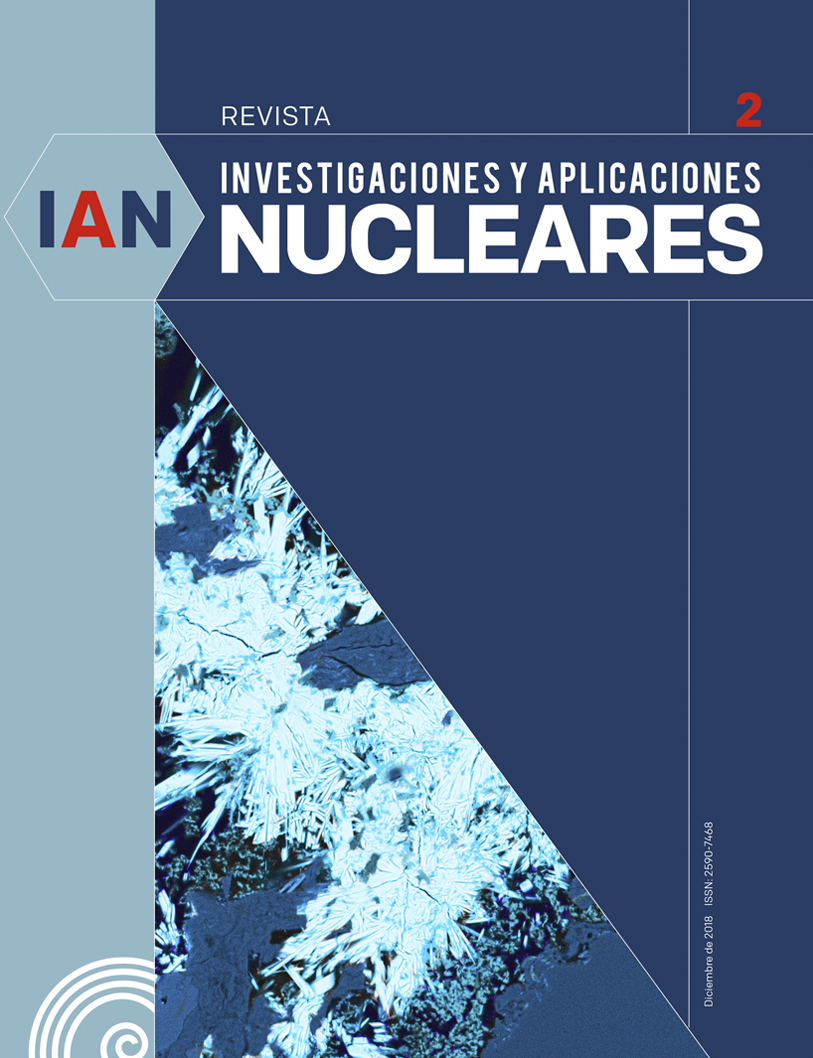Implementación del método del triple monitor para la caracterización del flujo neutrónico del reactor nuclear de investigación IAN-R1
DOI:
https://doi.org/10.32685/2590-7468/invapnuclear.2.2018.56Keywords:
Triple monitor method, neutron activation analysis (NAA), neutron flux, nuclear research reactor, Triga coreDownloads
How to Cite
Issue
Section
Published
Abstract
The present work describes the procedure carried out for the preliminary determination of neutron flux parameters for the nuclear research reactor IAN-R1 (RNI IAN-R1) through the not covered triple monitor method in the nucleus peripheral irradiation position. Using this method, the thermal flux value (ϕth), the epithermal neutron flux symmetry factor (α) and the ratio between thermal neutron flux with respect to the epithermal neutron flux (ƒ) were estimated. Those parameters were obtained by irradiating zirconium (Zr) monitors and a gold-aluminum alloy monitors (Au-Al 0.1% Au), which were irradiated at the G3 and G4 irradiation positions of the RNI IAN-R1. The following values were found for the parameters estimated at an operating power of 30 kW, ϕth = 2,1 × 1011 cm-2 • s-1 (variance CV 4%), α = 0,02 (CV 83 %), and ƒ = 67 (CV 8 %). The high variance in α could be explained if we consider that the method only uses 3 capture reactions to describe the epithermal neutron spectrum. The variance could be improved by application of multimonitor methods for neutron flux characterization.







